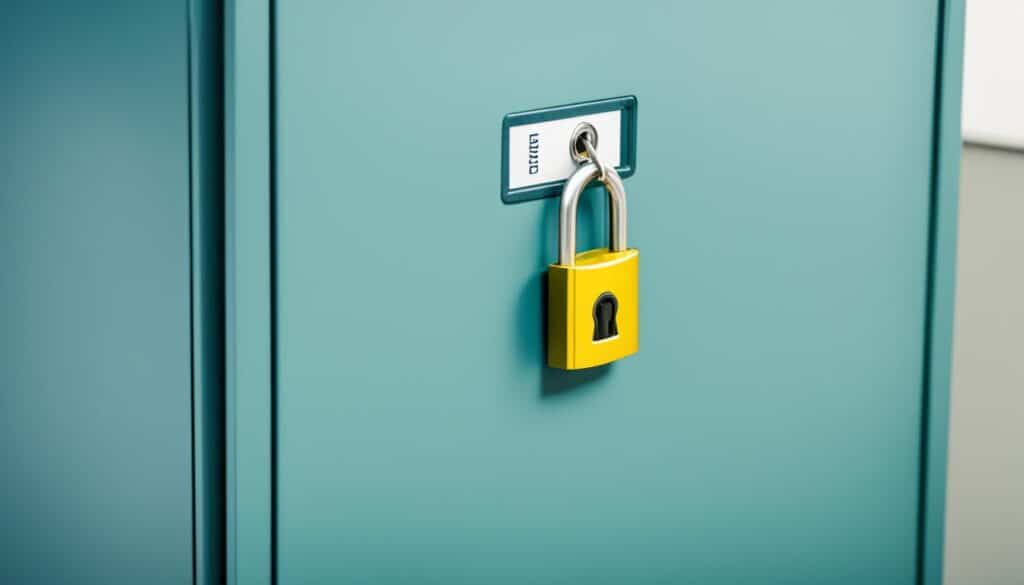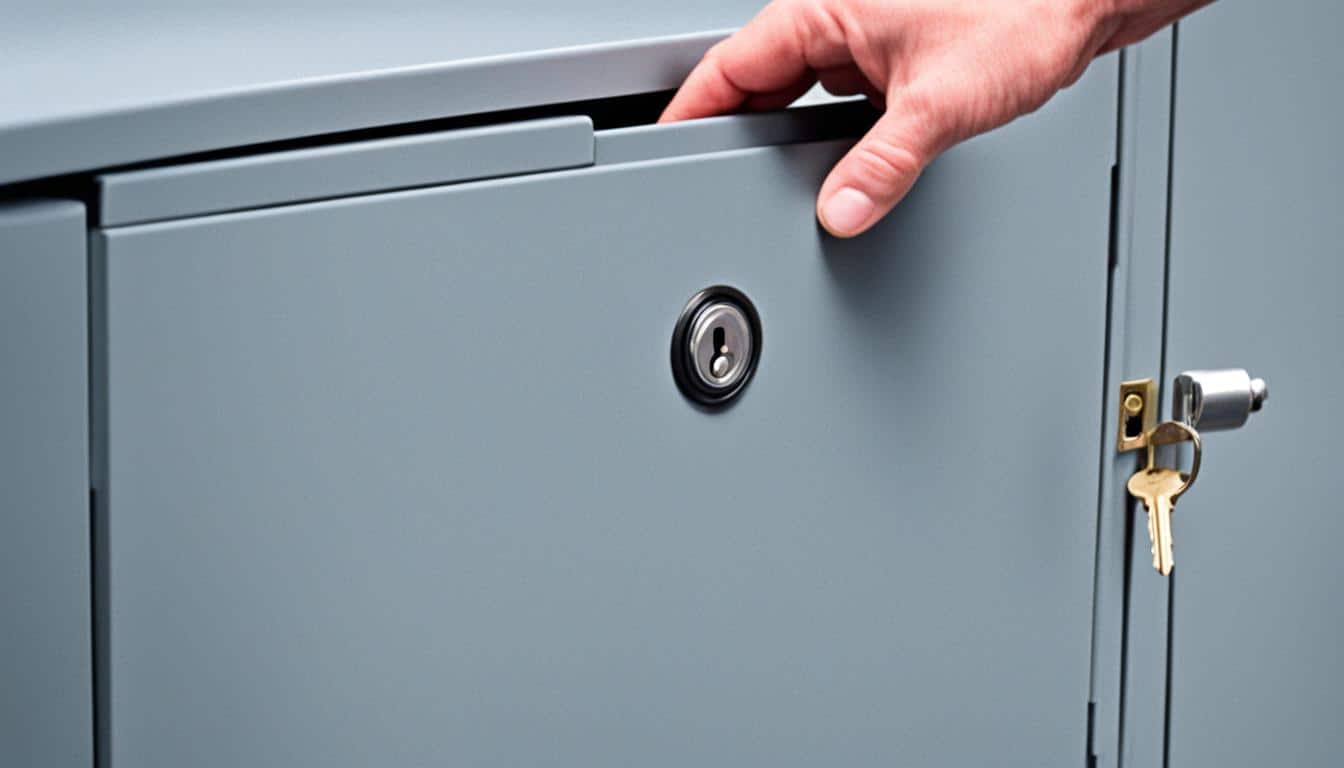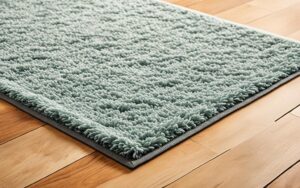Did you know that over 68% of businesses have experienced a data breach in the past year? This alarming statistic highlights the vulnerability of confidential information stored in filing cabinets.
Factory locks on these cabinets are often of low quality and can be easily compromised, putting your sensitive files at risk.
Installing a file cabinet lock correctly is essential to ensure the security of your documents.
In this article, I will provide you with a step-by-step guide on how to install a file cabinet lock, along with valuable tips and best practices.
By following these instructions, you can enhance the protection of your files and minimize the risk of unauthorized access.
Whether you are looking to replace factory locks, upgrade to electronic filing cabinet locks, or enforce key management policies, this comprehensive guide will equip you with the knowledge and skills required to safeguard your confidential information.
So, let’s get started and secure your files with a robust file cabinet lock installation!
Importance of Securing Information Stored in Filing Cabinets
Storing confidential information in filing cabinets without proper security measures can pose significant risks to businesses.
A compromised lock or manipulation of a lock can potentially lead to a physical data breach, putting sensitive information at risk.
To protect your files and minimize the risk of unauthorized access, it is crucial to secure your filing cabinets with high-quality locks and implement additional security measures.
This not only ensures the confidentiality of your documents but also helps you comply with data privacy regulations.

Physical breaches are a common and often overlooked threat in today’s digital age. Businesses often focus primarily on cybersecurity, neglecting the potential risks associated with inadequate file cabinet locks.
However, it is important to remember that not all information is stored digitally, and physical security measures remain a crucial aspect of overall data protection.
By securing information stored in filing cabinets, you can safeguard sensitive documents such as financial records, medical histories, legal contracts, and employee information.
This protects your business’s reputation, preserves client trust, and prevents potential legal complications.
To minimize the risk of physical data breaches and unauthorized access, consider implementing the following best practices:
- Choose high-quality locks specifically designed for filing cabinets.
- Regularly inspect and maintain your file cabinet locks to ensure they are functioning properly.
- Limit access to filing cabinets by implementing restricted key system or electronic access control.
- Enforce strict key management policies, ensuring keys are only provided to authorized individuals.
- Periodically review and update access permissions to files stored in cabinets.
- Store the most sensitive documents in a separate, highly secure cabinet or safe.
- Implement surveillance systems or alarm systems in areas where filing cabinets are located.
By taking these necessary precautions, you can significantly minimize the risk of physical data breaches and protect your sensitive documents from unauthorized access or theft.
Next, we will provide a detailed step-by-step guide on how to install a file cabinet lock, along with additional tips and best practices to ensure the security of your files.
How to Install File Cabinet Lock: Step-by-Step Guide
Securing your file cabinet with a reliable lock is essential to protect your valuable and confidential information.
Whether you are replacing factory locks or upgrading to electronic filing cabinet locks, installing a file cabinet lock is a straightforward process that can be done step-by-step.
To begin, remove the original manufacturer lock, which is typically of low quality and prone to vulnerabilities. Use a wrench or a pair of pliers to carefully remove the old lock core.
This will allow you to install a more secure lock that better meets your security needs.
If you’re looking to enhance your file cabinet’s security features, consider upgrading to electronic filing cabinet locks.
These locks offer advanced functionalities such as time-stamped record-keeping of file access, providing an extra layer of protection for your sensitive documents.
Remember, it’s important to change locks periodically, especially in larger offices with a higher employee turnover.
By doing so, you can ensure that only authorized individuals have access to your files and prevent potential security breaches.
Enforcing key management policies is another crucial aspect of file cabinet security.
Implementing strict protocols for key distribution, usage, and storage can help prevent unauthorized access and maintain control over who can open your file cabinets.
If you prefer professional assistance, consider enlisting the services of a reputable locksmith. They have the expertise and knowledge to install file cabinet locks correctly, ensuring maximum security for your valuable documents.
In conclusion, following a step-by-step guide for file cabinet lock installation allows you to replace factory locks, upgrade to electronic locks, change locks periodically, and enforce key management policies.
By taking these measures, you can safeguard your files and maintain the confidentiality of your sensitive information.
FAQ
How Do I Install A Lock On A Filing Cabinet?
To install a lock on a filing cabinet, start by removing the original factory lock using a wrench or a pair of pliers. Then, install the new lock core in its place.
Alternatively, you can opt for electronic filing cabinet locks for added security features. It is also recommended to change locks periodically and enforce key management policies.
What Are The Benefits Of Installing A File Cabinet Lock?
Installing a file cabinet lock helps secure valuable and confidential information stored in filing cabinets. It minimizes the risk of unauthorized access and physical data breaches, ensuring the protection of sensitive documents.
Can I Install A File Cabinet Lock Myself?
Yes, installing a file cabinet lock is a relatively easy process that can be done by following a step-by-step guide.
However, if you are not comfortable with DIY installation or want professional assistance, you can consider enlisting the services of a locksmith.
How Often Should File Cabinet Locks Be Changed?
It is recommended to change file cabinet locks periodically, especially in larger offices with a higher employee turnover. Regularly changing locks enhances security and reduces the risk of unauthorized access to sensitive information.
Are There Any Additional Security Measures I Should Consider For My File Cabinets?
In addition to installing a file cabinet lock, you can implement other security measures such as upgrading to electronic locks, enforcing key management policies, and considering professional locksmith services. These measures further enhance the security of your files.









